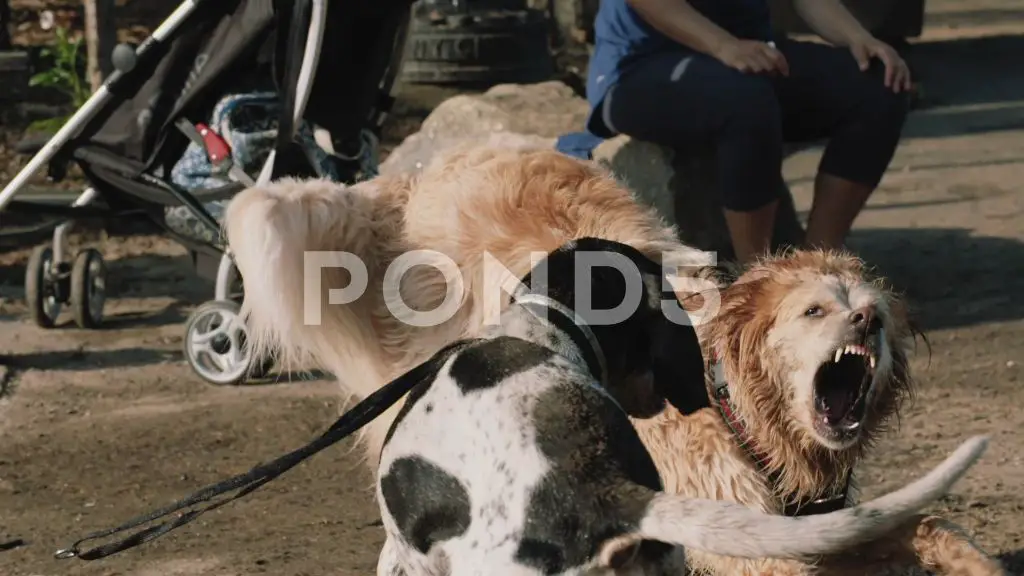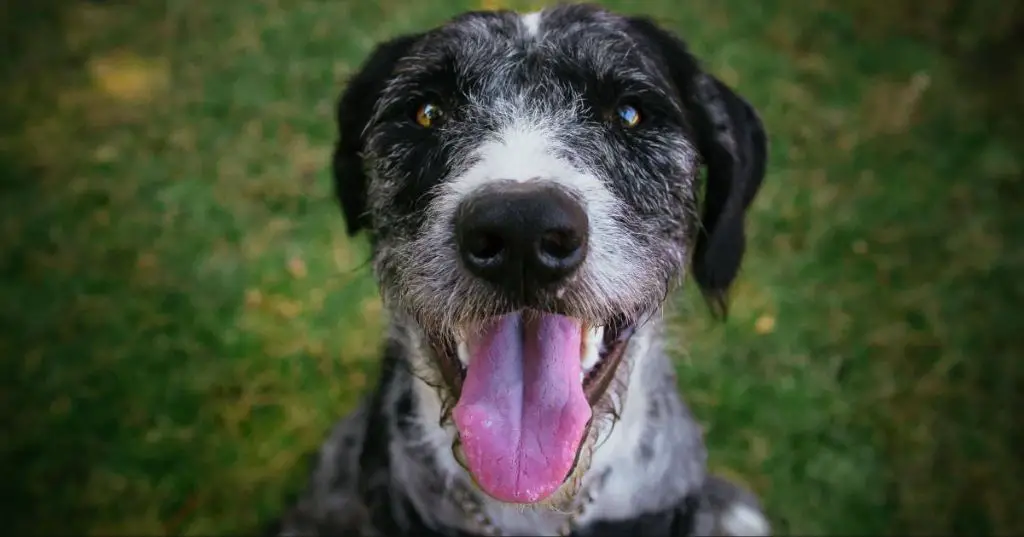1. Dangers of Disease Transmission
Dog parks can be breeding grounds for dangerous diseases that spread easily between dogs in close contact. The overcrowded and high-traffic nature of most dog parks means that any illness brought in by one dog can quickly spread to many others. Diseases like kennel cough and parasites like fleas, ticks, and worms thrive in the dog park environment.
With so many dogs playing in a limited space, it’s easy for parasites to jump from one dog to another. Dogs also sniff and lick each other frequently, which is another way viruses spread. Kennel cough in particular is highly contagious and can linger in the area even after an infected dog has left.
Some owners may not realize their dogs are sick and continue bringing them to the park, unintentionally exposing other dogs. Even dogs that appear healthy can be carriers. Overall the close quarters and lack of sanitation at dog parks creates a prime environment for diseases to move between dogs.
Dog Fights and Injuries

One of the main reasons I avoid dog parks is the risk of dog fights and injuries. Dog parks often contain a wide mix of dogs with very different sizes, energy levels, and personalities all interacting in a limited space. This can create a risky situation where dogs may get into fights and scuffles, sometimes leading to bites or other injuries.
Some of the highest risks come from dogs who are poorly socialized or aggressive being brought to the park. If these dogs have not learned proper interaction skills, they are more likely to get into fights with other dogs. Owners often do not pay close enough attention or intervene quickly enough to prevent serious incidents.
Dog fights almost always lead to injuries, even if they get broken up quickly. Bites and scratches can easily become infected. More serious bites may require stitches or other veterinary treatment. In some cases, fights can even lead to lasting trauma or extreme injuries. I would much rather avoid the possibility of my dog getting hurt in a fight at a dog park.
For safety, I believe it is better to carefully choose my dog’s playmates and supervise all interactions. Structured play dates with friend’s dogs or small puppy classes are safer alternatives. This allows me to take precautions to prevent injuries and make sure my dog has positive play experiences.
Lack of Space
Dog parks often become overcrowded, especially on weekends or in the evenings when most people are available to bring their dogs. With too many dogs vying for the same space, there simply isn’t enough room for all of them to play and run around freely. Most dog parks are relatively small areas, much smaller than a backyard where a dog can comfortably play and explore.
The cramped quarters in an overcrowded dog park can cause a lot of stress for dogs. With strange dogs constantly in their face, there’s no room for them to establish their own space. This can create tension between dogs as they jockey for position and try to carve out some personal territory. Dogs are less likely to relax and play when they feel stressed by the lack of space.
Crowded conditions also increase the chances of fights breaking out. With limited room to roam and get away from dogs they don’t get along with, some dogs feel threatened and tense. A snarl or sudden movement is more likely to spark an altercation when dogs are packed in tightly together. The lack of space increases reactivity in what is already a highly stimulating environment for most dogs.
No Separation by Size
One of the main issues with dog parks is there is usually no separation between big and small dogs. This lack of separation puts smaller dogs at risk of injury from larger, more energetic dogs. Small dogs can easily get bowled over or stepped on by bigger dogs who are playing roughly.

Smaller and more timid dogs also may become frightened by the larger dogs’ size and boisterousness. This can create unnecessary stress and fear for the small dogs every time they visit the park.
Dog parks need separate areas for big dogs and small dogs to keep the little ones safe. Small dogs should have their own fenced-in section where they can play and socialize without intimidation from larger dogs. This allows both big and small dogs to enjoy the park safely and comfortably.
Owners Not Paying Attention
One of the biggest problems with dog parks is that owners often get distracted or don’t watch their dogs closely. With multiple dogs running around off-leash, it’s easy for owners to start chatting with each other or looking at their phones. But when owners aren’t paying close attention, their dogs are more likely to get into scuffles, display aggressive behavior, or even attack other dogs. Dogs feed off our energy, so if we’re not fully engaged with them, they’re more apt to misbehave. For shy or fearful dogs especially, losing focus on their body language can lead to problematic situations arising before you have a chance to intervene. Dog parks require owners’ full attention to spot trouble brewing and correct behaviors early on. But most owners use the “off-leash” time to relax their own vigilance, which can create an unsafe environment.
Dogs with Different Play Styles
Not all dogs play well together, leading to scuffles. Dogs have different play styles and preferences that don’t always mesh at the dog park. Some dogs like to wrestle and chase, while others prefer calmer play. High energy dogs can overwhelm shyer ones. Herding breeds may try to herd other dogs continuously. This clashing of play styles frequently causes minor spats that escalate into fights. With dogs of unknown backgrounds all mingling together, it’s impossible to predict how they will interact. The free-for-all environment makes it easy for dogs’ play to get out of hand.
No Shade or Shelter
Dog parks often lack adequate shade or shelter, which can be dangerous for dogs on hot, sunny days. Without trees, awnings, or structures for dogs to rest under, the risk of heat stroke rises dramatically. On days when temperatures reach 80 degrees or higher, dogs can overheat in as little as 20 minutes if they have no way to cool down. Panting and access to water is often not enough to prevent hyperthermia. Lying in the blazing sun leads to rapid rises in body temperature that can cause brain and organ damage. Providing shade and air circulation is crucial for allowing dogs’ natural cooling systems to work properly.

As a responsible pet owner, I avoid taking my dog to parks on hot days if there is minimal shade. While my dog loves running around off-leash, her safety comes first. If the park doesn’t have shade structures, trees, or other cover, we find alternative activities on sweltering days. This might mean staying home or only walking her early in the morning or late evening when temperatures are cooler. A dog park is only fun for dogs if they don’t risk dangerous overheating and heat stroke. Since many parks lack adequate shade, it’s an area many owners overlook when assessing if a park is truly safe for their pup. For my dog’s health, I steer clear of parks without shade options to prevent an emergency trip to the vet!
Dirty Environment
One of the biggest issues with dog parks is that they are often not cleaned frequently enough. This leads to a buildup of dog waste that is both unsanitary and unpleasant. Dog feces contains a number of harmful bacteria and parasites like roundworms, hookworms, and giardia. When waste accumulates, these pathogens can survive for long periods. Dogs who step in or sniff the waste can easily pick up the parasites and become infected. And since many dogs roam and play off leash at the park, there is ample opportunity for them to come into contact with feces.
The buildup of waste also leads to very smelly and dirty parks. No one enjoys walking around an area littered with feces. Additionally, when it rains, the rainwater carries the waste and bacteria into the surrounding soil and grass. This creates an overall unhealthy environment for both dogs and humans that frequent the park.
Many dog parks simply do not have the resources or staff to properly maintain the grounds. While some parks have bag dispensers and trash cans for owners to clean up after their pets, not all owners are conscientious about doing so. And even when they do, park maintenance staff needs to regularly sweep and sanitize the grounds. Most municipalities do not invest enough in the daily upkeep of dog parks.
Better Alternatives
While dog parks can seem like an easy way for dogs to get exercise and social interaction, there are better alternatives that can provide a more enriching experience for your dog without the risks:
Hikes and Walks
Going for hikes or long walks allows your dog to explore new smells and sights at their own pace. You can bring along dog friends for one-on-one social time. With more space and fewer dogs, there is less chance of fights or unwanted interactions. Being out in nature provides mental stimulation. Make sure to bring plenty of water.
Playdates
Arranging playdates with friend’s dogs you know and trust can provide a safe outlet for socialization and play. You control the environment and which dogs interact. Playdates allow you to observe how your dog plays and socializes. Rotate homes or meet at a park. Make sure both owners are engaged.
Training Classes
From basic obedience to agility, attending training classes together provides mental exercise while strengthening your bond. Your dog will be engaged with you while socializing with other dogs in a controlled setting. Training builds confidence and skills. Consider nosework classes too!
Following Dog’s Preferences
Some dogs prefer smaller playgroups or different activities. While dog parks allow for open play, they force dogs into a chaotic environment with random dogs. This high stimulation may stress out some dogs. Anxious or nervous dogs will likely have a better experience in a more controlled setting.
Pay attention to your dog’s signals during and after the dog park visit. Do they seem overstimulated, fearful, or exhausted afterwards? Many dogs prefer one-on-one playdates or small playgroups with familiar dogs they know and trust.
Activities like hiking, swimming, playing fetch, or nosework can be great alternatives to the dog park. Work to understand your dog’s preferences so you can provide activities they truly enjoy.

Forcing a dog who dislikes the park environment to go regularly will only create more stress and negative experiences. Listen to your dog’s needs and preferences for play when deciding the best socialization activities.